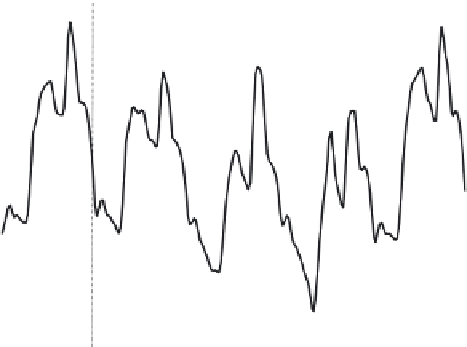Environmental Engineering Reference
In-Depth Information
Thursday
Friday
Saturday
Sunday
Monday
Figure 5.1
Five-day load demand profile
Clearly, this is a challenging task, made more difficult by the fact that the total power
drawn by consumers of a large utility can fluctuate between wide limits, depending
on seasonal weather, time of day, TV schedules, national holidays, major events, etc.
Figure 5.1 illustrates a typical northwest European demand profile over a 5 day
period. Superimposed on a daily variation of high demand during daylight hours
and low demand at night, it can be seen that the peak demand during weekdays is
significantly higher than that at the weekend. Similarly, the late night/early morning
minima are significantly lower at the weekend compared to weekdays.
Unfortunately, there can only be minimal control over load behaviour, although
appropriate tariff structures, for example, can be used to encourage demand during
natural periods of low demand and discourage demand during natural periods of
peak demand, so that a flatter, less variable demand curve is obtained. One com-
monly applied caveat to this statement is the use of pumped storage - an upper and
lower reservoir are linked by a hydraulic turbine - synchronous machine arrange-
ment which can operate either as a (hydro) generator or a motor (pump). During
periods of high demand, water is released from the upper reservoir, rotating the
hydraulic turbines and generating electricity, just as in a hydroelectric plant. Thus,
the peak demand on the system is effectively reduced, potentially avoiding the need
to start up responsive but expensive generation such as diesel engines and open-cycle
gas turbines (OCGTs). During periods of low demand (typically at night or at
weekends) and when electricity costs are at their lowest the water in the lower
reservoir is pumped back to the higher one in readiness for the next day. Hence, the
minimum load on the system is increased artificially. For smaller systems, this
has the benefit of ensuring that several generating units will always be required to
meet the load demand - minimising concern about system reliability and possible
system collapse (see Section 5.2.2). Even for larger power systems, with inflexible
nuclear generation, pumped storage can be of great benefit in filling in the troughs

































Search WWH ::

Custom Search